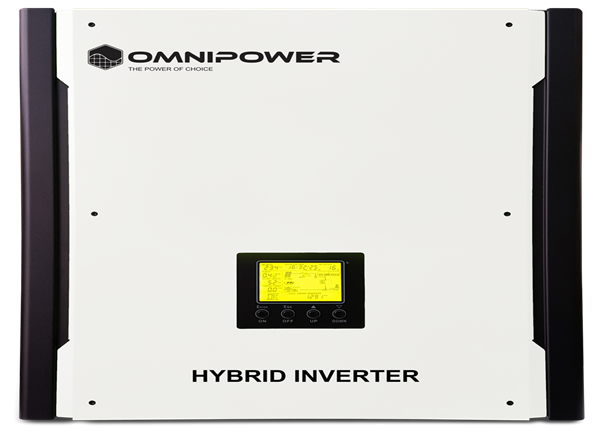Ideally, a PV solar system should be sized to suit the individual requirements of a customer. Installing a solar system is not just a matter of putting up a few panels and adding a few batteries. There are many other factors (and complex calculations) involved such as wiring, connections, environmental conditions, position of the system, physical location of the site, etc. Be aware of these factors (as well as the quality and efficiency of the solar equipment offered) when asking any solar company for a quotation. Make sure the company you are dealing with is an established company with a good reputation and can provide the correct advice and service backup. If you are not sure, get a second quotation/opinion.
To save costs and to help make a solar system more viable, follow the following guidelines:
-Try to implement cooking with gas.
-Try to install a solar water heating system or gas geyser, or invest in a timer switch for your existing geyser.
-Try to install power saver lights, or even better, LED lights.
While the following can be run on solar power, as they are heavy duty power consumers, try to avoid putting all heavy-duty power consumers onto solar e.g.
-Electric heaters
-Underfloor heating
-Geysers
-Tumble dryers and washing machines
-Electric Stoves, cooking plates, etc.
In order to design and quote on a solar system, suppliers need information such as:
- Should the system be grid tie? Check with your municipality if this is allowed and keep in mind that a pure Grid-Tie system will shut down in case of a Grid failure.
- Or should the system be self-contained as a backup system with batteries?
- Should the system be a backup system with grid-tie facility?
- Single phase or three phases?
- We need the total daily consumption in kW/hr.
- We need the peak power consumption in kW.
- Autonomy required? (the backup time required from batteries when there is no sunshine or municipal power, i.e. load shedding)
- Within how many days must the battery bank recharge after a full discharge?
- Where will the system be mounted: ground, flat roof, pitched roof, etc.?
- Co-ordinates / location.
- What the budget for the project?
kWh: In order to accurately calculate your system requirements, system engineers need the average daily kilo-watt per hour (kW/hr) that you use per day. This is not the instantaneous peak kilo-watts kW) you use but rather the amount of electricity you consume per day (on a prepaid system this will be the number of units used per day).
kW: In order to accurately size the inverter system as well as other components for the system your solar installer will require the instantaneous peak kilo-watts kW you use. This is different from the kW/h as described above.
If you are still not sure of the answers, please speak to your local electrician or an electrical engineer.
Once your chosen supplier has the correct information from you, the client, they can give a more accurate estimate.
PRODUCT FOCUS:
CIGS thin-film solar panels
What are CIGS thin-film solar panels and why are they often the first choice for Sinetech’s solar system installations?
When you hear the words “thin-film”, you may be picturing a flexible, portable solar panel that can be rolled up or folded away for storage. You are partly right, however the thin-film in question can be applied to nearly any substrate to create a photovoltaic unit, and so it is the case with our Eterbright CIGS solar panels.
CIGS solar panels sandwich that “thin film” of Copper, Indium, Gallium and Selenide (CIGS) between layers of tempered, toughened glass, creating a traditional rigid solar panel that boasts markedly superior aesthetics and performance ability.
Most people are familiar with the conventional blue squares of a silicone solar panel, or black squares of a monocrystalline panel. Now picture that same panel in solid black, with a pattern reminiscent of a subtle pin-stripe suit on closer inspection.
Sinetech have for many years been distributors of CIGS modules, alongside traditional silicon-based offerings, and in 2014 constructed a test-bed on the roof of their Strijdom Park offices to ascertain the performance of the various solar technology types in the Gauteng area under specific atmospheric conditions.
Comparing the three 3kW systems in our test-bed – one using polycrystalline panels, one using monocrystalline panels and the last using thin-film CIGS panels – the CIGS system delivers an electricity yield of 13% more than the other two technologies. On the basis that the prices of the three technologies are more or less the same, the savings offered by the CIGS are thus 13% higher!
Chris Rodgers, CEO of Sinetech, sums it up: “We believe that there are many cases where CIGS technology makes optimum use of the customer’s investment, and this is why we remain committed to the technology. This is not to say that it is appropriate in all scenarios or that we will cease to offer silicone technology, however, we believe that each installation should be decided on its own personal merits.”
Find out more about thin-film CIGS solar panels and whether they are right for you; visit our website – www.sinetech.co.za or contact Sinetech on 011 886 7874 or sales@sinetech.co.za
PRODUCT INFO: http://www.sinetech.co.za/solar-panels.html#eterbright
Hybrid Inverters
All power inverters in PV solar systems convert the DC energy created by your solar panels into the AC energy used by your appliances and other equipment.
Traditionally, one had to choose a specific inverter suited to the kind of system that was installed – an Off-Grid inverter (no electrical mains), a Grid-Tie inverter (no battery backup component), or a Grid-Interactive inverter (electrical mains and a battery bank are present). However, the OmniPower Hybrid Inverter is a complete game changer in that it can function optimally in all three scenarios – off-grid, grid-tie and grid-interactive – giving you more choice as to how and when you use your solar energy.
DATASHEET: http://www.sinetech.co.za/assets/img/omnipower_inverters/OmniPower%20Hybrid%20Inverter.pdf













